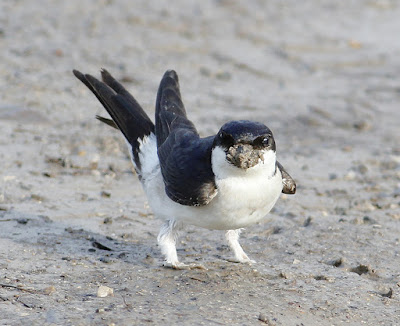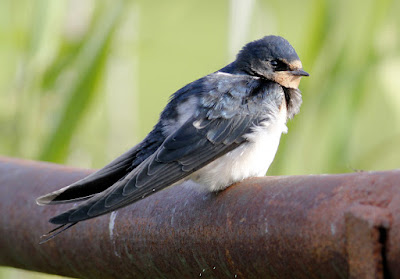I was looking to go ringing this morning but a stiff easterly put a stop to that plan. Instead there was some good birding to be had on the local circuit.
Heading north I stopped off at Cockerham to see the wintering flock of Linnets still very flighty over the weedy set-aside field but holding firm at 70/80 individuals. Half-a-mile away at Braides Farm there’s lots of water in the fields where I found 2 Little Egret and 30 Lapwing seriously outnumbered by a feeding and bathing flock of some 1500 Starlings and several hundred gulls. The gulls were mainly Black-headed Gulls with a couple of dozen Common Gull and one or two Lesser Black-backed Gulls in the mix. There was a Kestrel hovering over the roadside verges.
Lapwing
I made my way to Conder Green to be greeted by a Barn Owl quartering the marsh. No sooner had I lifted the camera than the owl flew towards its daytime roost and swooped out of sight into the building. It was almost 0900, a time when Barn Owls should be tucked up for the day.
I turned my attention to the creeks and the pool where I quite quickly found the wintering Spotted Redshank and similarly long staying Common Sandpiper. My now old “Atlas of Wintering Birds in Britain and Ireland”of 1986 shows that both species wintered in the UK at the time of the fieldwork I took part in during 1981 to 1984). As one might expect both were concentrated in the warmer south and west of England (and Ireland for the Common Sandpiper), but the Common Sandpiper was represented here in NW England by a number of dots on the map.
Common Sandpiper
The pool was pretty crowded with both waders and wildfowl, albeit most of them at long distance and away from the busy, noisy road. A few of the counts and bouts of activity, especially from Oystercatchers, Shelducks and Tufted Ducks, suggested that a number of birds have arrived back with a view to taking up summer residence. Here are the counts – 95 Teal, 65 Curlew, 15 Shelduck, 12 Wigeon, 10 Lapwing, 12 Redshank, 5 Little Grebe, 4 Tufted Duck, 2 Canada Goose, 1 Little Egret, 1 Grey Heron.
Tufted Duck
Shelduck
A single Skylark flew over and there were a few Chaffinch and a singing Greenfinch along the hedgerow.
A quick look at Glasson found no Goldeneye on the yacht basin so I settled for 21 Tufted Duck, 24 Coot and 16 Cormorant. Of the latter, two were fishing the others lined up along the far jetty drying out from their own earlier fishing expeditions.
Cormorant
The route back home took me past flooded fields at Pilling where I stopped awhile to count 400+ Lapwing, 350 Redshank, 1 Black-tailed Godwit, 1 Ruff and many more Black-headed Gulls.
Dunlin
That was a pretty good morning of birding I hope everyone will agree. Look in soon for more birding, ringing or photography.
Linking today to Stewart's World Bird Wednesday and Anni's Birding.
Linking today to Stewart's World Bird Wednesday and Anni's Birding.





































































.jpg)














